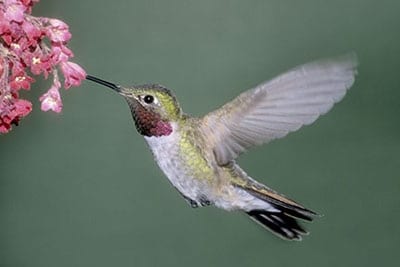Freezing the Moment II

Lots to think about: freeze the motion / emphasize the action / make it artistic / zoom it / pan it / time it right / know the subject / ……….. I wanted to write a single HOW TO article on action but based on the number of topics and wanting to write more than one sentence about each, I decided to dedicate this entire month’s Tips to Action. Action and digital photography go hand in hand. Digital photography can expedite the learning process and provide better images using the instant feedback of the LCD. If the results are not what you desire, modify the settings to produce the wanted effect. Bump up the shutter speed, slow it down, adjust the ISO for more versatility, change your angle, etc. Make sure to check all the articles this month to get tips and hints on how to capture the many different ways to photograph action.
When it comes to stopping action, think images from newspapers, news magazines, Sports Illustrated, natural history publications, etc. The key moment is frozen in time and every facet of the movement is stopped. Whether it’s the point of impact of a key tackle in a football game, a split second emotional expression as the rescue team pulls a loved one to safety, or two eagles colliding in a mid air duel over a fish, the resulting image leaves the viewer saying WOW!
Completely stopping the action is dependent upon the shutter speed at which the photo is made. It’s not an “almost stop” where part of the subject depicts movement. This often implies the photographer didn’t accomplish the goal. The shutter speed needs to be fast enough to arrest all movement. There are a number of factors that determine at what speed a photographer can shoot. Knowing how these factors play into the mix is huge in order to create the perfect action stopping shot. Based on the limitations of each given situation, it may or may not be possible to produce the necessary result.

© Russ Burden
Ambient Light: Bright and sunny conditions offer the potential to use very fast shutter speeds. Bright overcast conditions provide less light, therefore less versatility. As clouds thicken, your options decrease further. Indoor lighting and or artificial street or stadium lighting imposes further limitations. SOLUTION: As light levels decrease, open your lens to wider f stops / use lenses with wider maximum apertures / bump up the ISO.
Fast Glass: Most professional sports, newspaper and nature photographers have lenses with fast glass. These lenses allow the photographer to set apertures of f4 or f2.8. With each additional gained f stop comes one additional shutter speed. If photographer A uses an f5.6 lens while photographer B uses an f2.8 lens, this means while photographer A’s fastest shutter speed may be 1/125, photographer B can use 1/500th. This difference is huge when it’s necessary to freeze the moment. SOLUTION: buy fast glass but it’s expen$ive / bump up the ISO / wait for the ambient light to brighten.

© Russ Burden
Stalling Point: If you’ve increased your ISO to the point where you know the image quality will suffer and your lens is open to it’s widest aperture, rather than throwing in the towel, shoot often and a lot. The reason I suggest this is two fold. In that you’re shooting digitally, simply edit out the blurry shots. If none work, chalk it up to practice and experience. The second reason is more key. A lot of action has a stalling point. If the shutter is open at this point, the necessary speed to record it doesn’t have to be as fast as when it’s moving more quickly. SOLUTION: shoot more photos and set the motor drive to continuous high to increase your odds of capturing the stalling point.
The Plane: The ambient light is low, you have a lens with fast glass, your ISO is set high, you’ve tried the stalling point theory, and still the pics don’t reveal frozen moments. There’s still one more option you have but it’s contingent upon the direction in which the subjects move. Subjects that move across the film plane require faster shutter speeds to arrest the motion than those coming toward or moving away from you. Try to limit your photography to the moments at which this occurs. SOLUTION: While it’s not the ultimate in providing versatility, it offers an option and hopefully a winner.
Flash: Flash is a great tool to help freeze the moment if the subject is close. The effective shutter speed is actually the duration of the flash as opposed to the shutter speed set on the camera. For example, in the accompanying image of the hummingbird, I dialed down the power setting on my flash giving me an effective duration of approximately 1/8000 of a second. As I was using flash as my main light, even though my camera was set to 1/250, it was the quick duration of the flash that froze the hummingbird’s wings.

© Russ Burden
To learn more about this topic, join me on one of my Photographic Nature Tours. Visit russburdenphotography.com and click on the NATURE TOURS button for more information. Also, pick up a copy of my new book, Amphoto’s Complete Book of Photography. You can purchase a signed copy directly from me or visit your local book store or Amazon. Contact me at [email protected] to order your signed copy.



